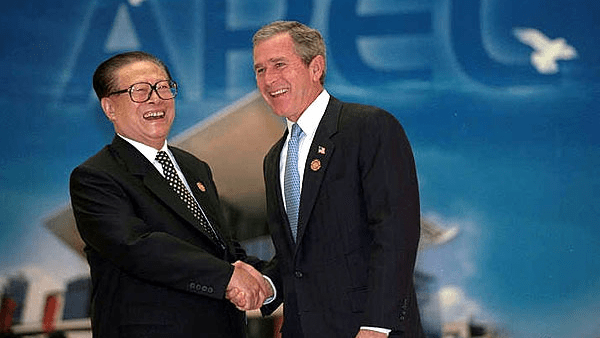Economic View: Revoke China MFN Status Now

BY JEFF FERRY | Chief Economist
There is growing talk in Congress in favor of revoking China’s most-favored-nation (MFN) status. That would raise standard U.S. tariffs on China from the current single-digit levels to an average of 39.9%, according to our calculations. Most of the talk is among Republicans, although one progressive Democrat, Rep. Ro Khanna (D-CA), has suggested that China’s MFN status should be put up for annual vote by Congress. That would be almost as disruptive to global business investment in China as simple MFN revocation, perhaps more so.
The multinational business community claims that revoking China MFN would be bad for the U.S. economy. They are wrong. As usual, they are talking their own book. It’s in their interest to keep outsourcing production to the lowest-cost place they can find. China not only pays its workers poorly, it exploits slave labor in the Xinjiang region, it subsidizes many industries to hold prices down and achieve global market share, and it oppresses workers by, for example, locking them inside factories during the pandemic to ensure that production continues.
The second-best way to assess the economic impact of revoking China MFN is to use an economic model and I look at that below. But the best way to gauge the impact is to look at our previous and current experience with tariffs on imports from China, the Section 301 tariffs that were imposed in 2018 and 2019. The impact of these tariffs on the U.S. economy was surprisingly small. Despite all the media hullabaloo, and the complaints from the economist community, which has a religious devotion to “free trade,” the economic effects of those tariffs were small. There is evidence to prove this.
The U.S. International Trade Commission (USITC) has done the best study of the 301 tariffs[1]. They found that the tariffs modestly stimulated U.S. production, and raised U.S. prices very slightly. In their own words, the USITC found:
“for directly affected industries an overall increase in the value of domestic production by 0.4 percent on average each year from 2018 to 2021, with part of that value increase coming from a 0.2 percent increase in the price of affected products that are domestically produced…For the 10 industries with the highest value of imports covered by section 301 tariffs, the models estimate that the value of U.S. production rose between 1.2 percent and 7.5 percent in 2021 as a result of section 301 tariffs.” [1]
The largest increase in domestic production, 7.5%, came in the Furniture and Kitchen Cabinets category. That’s because the raw materials (wood) can be found here, and in the case of furniture it can be awkward and expensive to ship across the Pacific. So producers and retailers reacted to the China tariffs by bumping up U.S. sourcing.
Of course the largest response to the 301 tariffs was the shift in U.S. sourcing to third countries. While our imports from China fell by 0.4% between 2018 and 2022, our total goods imports rose by 28%, our imports from Mexico rose by 32%, from Thailand by 84%, from India by 58% and from Vietnam a stunning 160%.
The most notable feature of this change is that despite all the talk about U.S. dependence on China, it has been relatively easy for most manufacturers to shift production away from China. That’s because much of China’s manufacturing remains low-value-add and based on cheap labor. In many cases, Chinese factories assemble parts (like microchips) made elsewhere in Asia. Even when the raw materials come from China, as in apparel made from Chinese cotton or synthetics, there are plenty of Asian alternatives that multinationals can leverage to leave China.
China MFN removal would be more of the same on a larger scale. The tariff increases would be roughly double those in the 301 tariffs, and they would cover 100% of China’s U.S. shipments instead of half. So the process of diversification away from China would be quicker and more dramatic. But it would leverage the trail already blazed thanks to the 301s. The Wall Street Journal recently reported that Apple, one of the multinationals that led the way into China two decades ago, is soon to be in a position to assemble 25% of its iPhone output in India. It’s not hard to see Apple assembling 75% of its global iPhones there—all of them, in fact, except those destined for the Chinese market.
If the impact of China MFN on the U.S. economy was 3-4 times the impact of the 301s, we should expect it to stimulate U.S. production by some 2% and raise prices by perhaps 0.75%. Given what the USITC found in some specific industries, we could expect that some industries would see production increases on the order of 5%-10%. This would be very healthy for the U.S. economy and create thousands of good, new jobs in manufacturing industries.
Modeling China MFN Revocation
The CPA model of China MFN revocation aligns very well with the real world evidence from the USITC and anecdotal evidence from industry. The CPA model found that U.S. GDP would rise by 1.75%, household income by 4.9%, and two million jobs would be created. U.S. manufacturing output would rise by 6.1%, with some of the strongest increases seen in sectors where our output today is low and China is a dominant supplier. Computer and electronics output, for example, would rise by 49%, a stunning improvement in an industry that is vital to America’s future in economic and national security terms. Most of that growth would be in electronic components, where there is already production capacity in the U.S.
Not surprisingly, the U.S. China Business Council got very different results when it commissioned Oxford Economics to model the results of China MFN revocation. The USCBC study found that GDP would fall by 6% and 744,000 U.S. jobs would be lost. They forecast a 1.2% increase in the consumer price index due to the MFN revocation.
The USCBC study is wrong and misleading because it relies on the standard off-the-shelf version of GTAP, the widely used trade model. As we have described in detail elsewhere (see here and here), the standard version of GTAP is not a suitable forecasting tool because it does not measure actual economic performance but instead performance between the current situation and an imaginary post-tariff “equilibrium.” As graduates of Econ 101 will know, “equilibrium” means that all resources are fully deployed, i.e. there is no unemployment and no additions or subtractions to the labor force and the capital stock. In such a straitjacket, the only effect tariffs are allowed to have is to raise prices. The standard GTAP model uses a multiplier effect to ensure that the price increase has a downward impact on GDP.
Standard GTAP is not suitable for real-world forecasting. The USCBC study backhandedly confirms this when they cite their previous studies’ job loss figures. According to their report, 245,000 jobs were “lost” in their previous model exercise for the 2017-2019 “trade war.” You cannot find those alleged lost jobs in real world data and the USCBC does not even try. The “lost jobs” exist in their model and nowhere else.
Millions of gallons of digital ink have been spilled over the alleged inflationary effects of tariffs. Thousands of journalists and hundreds of economists have claimed that the 301 tariffs had a one-for-one impact on U.S. consumer price increases. This is simply untrue. The USITC found that U.S. prices of goods in the sectors where imports were tariffed rose on the order of 10% to 20% of the tariff rate. In other words, a 25% tariff on say ladies clothing raised the U.S. price of ladies clothing by some 2.5% to 5%. The imported-from-China goods rose by a figure close to the tariff rate, but all the other goods in each sector, whether made in the U.S. or imported from elsewhere, rose by little or zero, so the overall price jump in that sector was 10% to 20% of the tariff rate. One recent academic study whose authors included Gita Gopinath of the IMF found an even smaller price jump, with a 10% China tariff leading to only a 0.35% increase in the consumer price of the goods in that sector. Despite this evidence, the latest USCBC study stuck with that flawed one-to-one assumption.
The result is that the USCBC/Oxford study takes a hugely exaggerated estimate of the price impact of tariffs, plugs it into a model that does not allow production to rise, and produces unrealistic and useless results. This reflects the free-trade bias of the economists and the business interests of those who paid for the study, which are companies that would prefer to continue producing in China.
The International Dimension
Finally, consider the global implications. China MFN revocation by the U.S. would be a step towards correcting the fundamental flaw of the current international trading system, which was built into the system at Bretton Woods and survived the jump from fixed to floating exchange rates in the 1970s. That flaw is that there is no way to punish or alter the behavior of countries that run permanent trade surpluses to goose their own economic growth while undermining the growth of their trading “partners.” This flaw combines with the unfortunate characteristic of U.S. democracy, where congressional gridlock makes political leaders unable to tell the public that our trade deficits must end for us to rebuild our economy.
If the U.S. were to impose 40% average tariffs on China, China would not sit still. It would unleash its huge export machine (also known as a worker oppression machine, because the oppression of workers pioneered by capitalists in the 19th century has been improved and perfected by Communist regimes) on other nations that did not impose such tariffs. The idea of a tidal wave of Chinese goods crashing down upon major markets like Europe and Japan would create an international crisis. It would bring all major nations to the negotiating table. China, as the largest exporter, would have few cards to play. Nations would agree a new deal including what should have been in the Bretton Woods Agreement back in 1944, namely that any nation with net exports worth more than 1% or 2% of its GDP persisting for more than a couple of years should have its exports penalized to bring it back into balance and stop its exploitation of its neighbors.
[1] United States International Trade Commission, Economic Impact of Section 232 and 301 Tariffs on U.S. Industries, Investigation No. 332-591, USITC Publication 5405, March 2023.
[2] Op. cit. pg. 139-140. For a further discussion of the USITC findings, see also my article, USITC Report Shows Tariffs Boosted U.S. Production, Sept. 15, 2023.

MADE IN AMERICA.
CPA is the leading national, bipartisan organization exclusively representing domestic producers and workers across many industries and sectors of the U.S. economy.
TRENDING
Senator Blackburn and Ossoff’s De Minimis Bill is Seriously Flawed
What Are Trump’s Plans For Solar in the Inflation Reduction Act?
The latest CPA news and updates, delivered every Friday.
WATCH: WE ARE CPA










